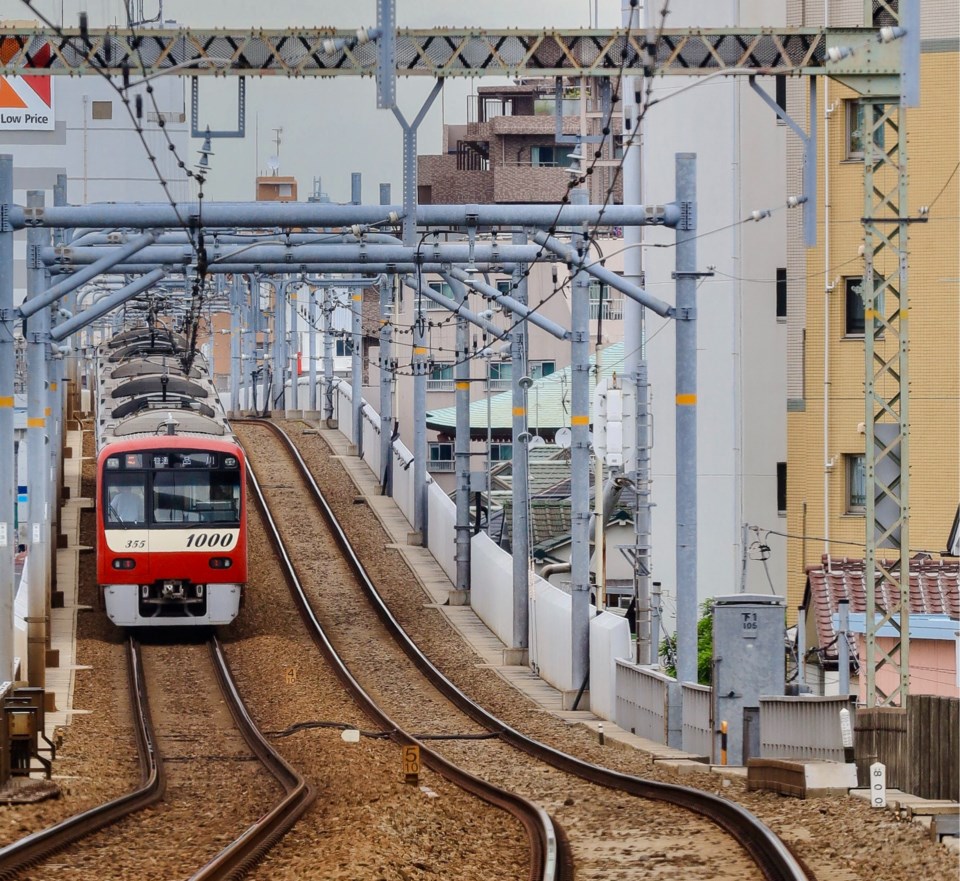Electric rail vehicles first appeared around 1880. Initially, these were very small trains with one or just a few carriages for special applications like subways or alpine tunnels where a coal-fired locomotive’s fumes would be unpleasant, toxic and hard to vent.
Soon after, electric street cars began to replace horse-drawn trams, particularly on hilly routes where horses struggled.
Stephen Leacock described the hill problem in Montreal vividly: "With its extension to the upper part of the city began the agonies of the streetcar horse, hauling a cluster of human beings clinging like bees to the rush hour car up a cruel slope, exactly equal to the utmost power of the animal."
In fact, passengers often had to disembark and walk Côte des Neiges hill, the first tram route to be electrified in Montreal.
The high capital cost of electrification plus the low price of coal delayed the widespread conversion of European railways to electricity until the 1940s. A decade later, North America underwent a different conversion. In the 1950s coal-fired steam locomotives were rapidly and completely replaced by diesel engines generating power for the locomotive’s electric traction motors.
The diesel-electric locomotive used far less fuel than a steam engine, was cleaner, and required less manpower to operate. In countries with abundant petroleum resources, diesel electric was a logical choice.
By 2020, almost 60 per cent of European rail lines were electrified. In several countries, more than 75 per cent of their track was electric. By contrast, in 2020, less than one per cent of rail lines in the United States, Canada and Mexico were electric. This is particularly galling for me, because Bombardier was one of the world’s leading manufacturers of electric rail equipment, including high-speed trains. But the only rail equipment Bombardier sold in Canada were tram cars and subway trains. (In February 2020, Bombardier’s rail division was bought by a French company, Alstom, for €7 billion.)
Electric trains have several advantages over diesel-electric. An obvious one is losing the locomotive’s substantial weight. With relatively short distances between stops, rapid acceleration is important to speed journey’s; lowering the train’s total weight improves acceleration considerably.
Few European commuter trains have a locomotive. Whether pure electric or diesel electric, they are operated from a small cab in the front carriage. The locomotives for trains like our GO train weigh around 150 tonnes with the bi-level coaches tipping the scales at 50 tonnes. The engine accounts for over 20 per cent of the train’s weight.
Electrification makes it easy to put motors on every axle, giving excellent traction.
Unfortunately, routes leading to Toronto may not deliver all of the speed electrification promises due to heavy rail traffic as one approaches downtown.
One solution to that issue is for the train to intersect with Toronto’s existing and expanding subway and light rail surface transport systems. Many passengers don’t need to go all the way to Union Station.
Montreal’s commuter rail lines offer passengers the opportunity to transfer to Montreal’s 'Metro' or bus transit at least once before reaching the downtown terminal; some offer two or three such opportunities.
Diesel electric trains use friction brakes to stop, converting their kinetic energy to heat and wasting it.
My electric car does most of its stopping by converting the car’s kinetic energy into electricity which is sent back to the battery, improving range. An electric train can perform the same trick, retrieving over 80 per cent of its kinetic energy smoothly and silently.
This electricity is available to power another train; no costly battery needed. Of course, the friction brakes are retained for emergency use.
Other advantages of electric rail include low maintenance, high reliability, low “fuel” costs, low to zero carbon emissions (Ontario’s electricity is largely carbon-free), zero local emissions (NO x , SO x , CO, soot), less wear on rails (lighter overall weight and multiple powered wheels), operate on various “fuels” (wind, solar, moving water, nuclear, etc), little wear on the friction brakes, plus greatly reduced noise.
Electric rail’s only disadvantage is the high capital cost of electrification. But once this investment has been made, low maintenance begins to pay important dividends.
I look forward to the day Barrie’s GO train becomes electric!
Peter Bursztyn is a self-proclaimed “recovering scientist” who has a passion for all things based in science and the environment. The now-retired former university academic has taught and carried out research at universities in Africa, Britain and Canada. As a member of BarrieToday's community advisory board, he also writes a semi-regular column. If you have a question Peter might be able to answer or something you're curious about, email us at [email protected].



